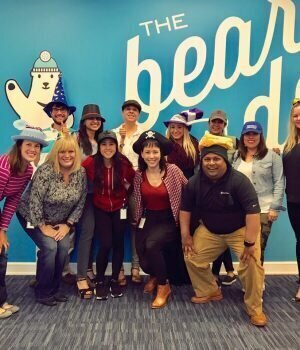In this blog series on how elevating cognitive performance is a game changer for organizations, I’ve invited Neil Smith, CTO at Think Outcomes, to join me in writing on this important topic due to his expertise and the cognitive performance software his firm has created.
Eliminate cognitive friction to maximize human performance
Improving cognitive performance is a strategic imperative for anticipatory leaders. Yet, cognitive performance slows down due to cognitive friction. Cognitive friction occurs when professionals can’t think through uncertainties clearly in their minds. These uncertainties include:
- risks
- opportunities
- outcomes
- consequences
- implications
- impact
- causations
- causes and effects
In an organization, cognitive friction occurs frequently across many professional roles, minds and perspectives. For the 15 areas in a cognitive operation below, cognitive friction not only spans many responsibilities, it also impacts relationships and shapes cultures.
15 areas of a cognitive operation
Cognitive friction across perspectives
Cognitive friction occurs when two or more professionals are challenged to get on the same page. They must resolve their perspectives — which can be very challenging. In business, professionals:
- perform critical thinking
- make decisions
- communicate with stakeholders
- collaborate with other professionals
- react to uncertainties
- work with peers and stakeholders to address situational challenges
- advise other professionals about their cognitive work
- evaluate the thoroughness to think through situations in the minds of their thinkers
- review the risk-reward trade-offs among their team members
Cognitive friction within the mind of a professional
Cognitive friction exists within the minds of professionals and creates undue stress. The six reasons friction occurs is due to:
- the processing limitations in the mind
- ineffective communications
- unproductive collaborations
- uncertainties in their minds
- lack of cognitive insights and foresights
- bias that leads to cognitive divisiveness
Processing limitations in the mind
 When processing multiple data points in the mind, cognitive work can become a highly stressful activity.
When processing multiple data points in the mind, cognitive work can become a highly stressful activity.
It’s amazing how many leaders are not equipped with cognitive tools to manage uncertainty across situations, close their knowledge gaps and achieve expected results.
When a situation includes more than seven variables, it’s well-known that the human mind is not able to process this level of complexity. Think how we receive, process and remember phone numbers. Our minds are not wired to synthesize 10 or more digits at a time.
In the U.S., people think about the 10 digits in a pattern of a 3-digit area code, a 3-digit prefix and 4-digits for the line number; our minds consume, process and recall smaller chunks of information.
 Try this exercise in your mind to see how complexity increases quickly: spin all the digits of five phone numbers in your mind as if the numbers were on a slot machine. Can you keep track of the numbers? Most of us cannot; our minds get overwhelmed right away.
Try this exercise in your mind to see how complexity increases quickly: spin all the digits of five phone numbers in your mind as if the numbers were on a slot machine. Can you keep track of the numbers? Most of us cannot; our minds get overwhelmed right away.
When multiple changing variables exist, that’s the type of stress professionals experience every day in their minds as they perform their risk-reward trade-offs. Without additional cognitive capabilities, leaders turn to their gut as a place to find answers; often, though, the gut isn’t a very good logic engine.
Operating risk is introduced when critical thinkers and decision makers do not have access to complementary, cognitive tools to perform their cognitive activities at their best.
Effective communications accelerate buy-in and decisions
The challenges increase further for critical thinkers and decision makers when they communicate with their stakeholders, peers and dependents to gain agreement about multiple, interdependent variables.
These heterogeneous thinkers add new perspectives to the decision process, which increases the complexity.
That’s when members of decision teams communicate from their emotional viewpoints. Decisions stall, lasting impressions impact culture and relationships, and people experience an impasse.
Productive collaborations are needed to achieve better outcomes
Google Hangouts, Skype and Zoom represent a step forward in collaboration and reduce travel costs. Yet, as professionals move between face-to-face and online meetings, they still struggle to innovate with breakthrough thinking.
Often, we hear professionals say, “if I could see what’s in the minds of the people I’m working with, that would help me address the challenges I’m aware of, too.” Yet, given human limitations, most professionals can’t bridge that gap effectively.
If meetings involved the ability to demonstrate thinking patterns, that would help professionals overcome this human hurdle.
As professionals join meetings, they commonly bring their mental models and biases from years of experience. Their mental models create barriers to synthesizing other people’s perspectives as well as new ways of thinking into their own thinking.
Where they use their voices and presentation software to convey their thinking, most attendees try to follow the logic rather than elevate their own thinking. If they had a way to unify their thinking through the visualization of evidence that focused on addressing questions of uncertainty and their critical thoughts, they’d optimize their time, learn to pre-solve issues and focus on better outcomes together. That would advance productivity in thinking in a visual way.
When professionals conclude their meetings with follow-on questions, leaders wonder which questions weren’t brought up? Are their teams going down the wrong paths? How do these questions connect to the stakeholders’ objectives? Are they considering the Hard Trends based on future facts that are shaping the future?
Professionals expend valuable time to get to clarity as they reflect on their learnings when they need insights and foresights more quickly. Anticipatory leaders seek to institute advanced collaboration processes that yield greater productivity among their teams.
They see everyday innovation and breakthrough thinking as a competitive advantage today as well as tomorrow.
Uncertainties, cognitive insights and foresights
As connected teams in today’s data-driven world, data scientists and stakeholders strive for better outcomes together. Where data scientists focus on big data and use machine learning to ask questions about data, stakeholders focus on decision information and ask questions to solve situational challenges. The minds of stakeholders are as effective as the:
- quality of their questions to resolve their problems and uncertainties
- cognitive insights and foresights that arise from their mental models
Bias and cognitive divisiveness
In the minds of professionals, cognitive friction results from their cognitive biases and the synthesis of disparate data. Cognitive divisiveness exists among professionals as data synthesis and bias differ across perspectives. Cognitive friction and divisiveness affect velocity and outcomes.
In their roles, professionals:
- are often unable to access data structured the way they think about risk-reward trade-offs
- don’t know what they don’t know during decision making
- are challenged many times to demonstrate their points of view
- are frequently challenged to see alternative points of view during communications
- struggle to shape the thinking of team members due to predefined mental models
- are challenged to arrive at strategic foresights and engineer outcomes
A critical thinking advantage
To gain an advantage in today’s world, cognitive teams must pre-solve issues through a continuous flow of cognitive insights and foresights.
To achieve their objectives, they must find new wisdom within the cognitive gaps in their minds — i.e., to get from “here” to “there.” “Here” is where they are today in context to their cognitive responsibilities.
“There” is where they need to go. This cognitive gap represents their current state and target state of their subject profiles. Their stakeholders depend on actionable knowledge and wisdom from their team of thinkers to improve business results.
This starts with the capabilities of their cognitive resources and tools.
Learn how to elevate your planning, accelerate innovation and transform results with The Anticipatory Learning System and how to maximize the cognitive performance of your team with Cognitive Performance Software.
For more business tips, check our opportunities section and subscribe to our weekly newsletters.







